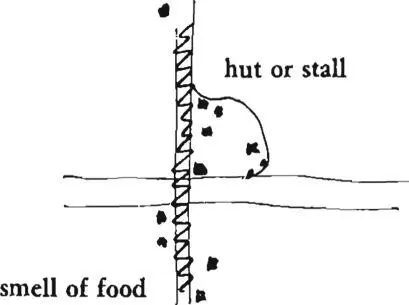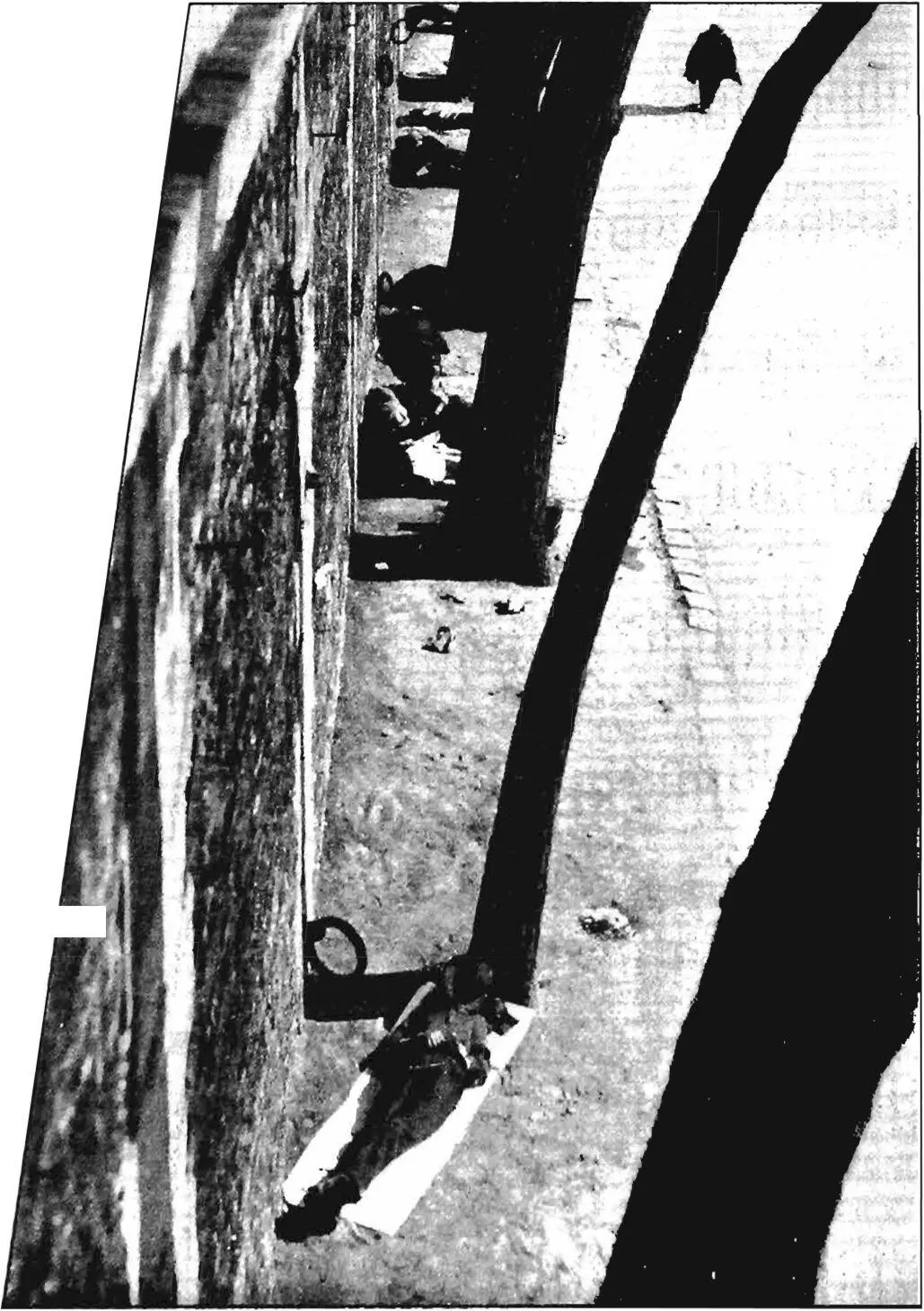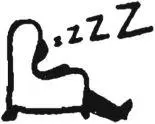Christopher alexander - A pattern language
Здесь есть возможность читать онлайн «Christopher alexander - A pattern language» весь текст электронной книги совершенно бесплатно (целиком полную версию без сокращений). В некоторых случаях можно слушать аудио, скачать через торрент в формате fb2 и присутствует краткое содержание. Жанр: Прочая научная литература, на английском языке. Описание произведения, (предисловие) а так же отзывы посетителей доступны на портале библиотеки ЛибКат.
- Название:A pattern language
- Автор:
- Жанр:
- Год:неизвестен
- ISBN:нет данных
- Рейтинг книги:3 / 5. Голосов: 1
-
Избранное:Добавить в избранное
- Отзывы:
-
Ваша оценка:
- 60
- 1
- 2
- 3
- 4
- 5
A pattern language: краткое содержание, описание и аннотация
Предлагаем к чтению аннотацию, описание, краткое содержание или предисловие (зависит от того, что написал сам автор книги «A pattern language»). Если вы не нашли необходимую информацию о книге — напишите в комментариях, мы постараемся отыскать её.
A pattern language — читать онлайн бесплатно полную книгу (весь текст) целиком
Ниже представлен текст книги, разбитый по страницам. Система сохранения места последней прочитанной страницы, позволяет с удобством читать онлайн бесплатно книгу «A pattern language», без необходимости каждый раз заново искать на чём Вы остановились. Поставьте закладку, и сможете в любой момент перейти на страницу, на которой закончили чтение.
Интервал:
Закладка:
6. Once such a process is rolling, a community, having adopted the patternhealth center, for example, might invite a group of doctors to come and build such a place. The team of users, designing the clinic would work from thehealth center pattern, and all the other relevant patterns that are part of the community’s language. They would try to build into their project any higher patterns that the community has adopted—nine
PER CENT PARKING, LOCAL SPORTS, NETWORK OF PATHS AND CARS, ACCESSIBLE GREEN, etC.
7. It is of course possible for individual acts of build-ing to begin working their way toward these larger communal patterns, even before the neighborhood, community, and regional groups are formed.
Thus, for example, a group of people seeking to get rid of noisy and dangerous traffic in front of their houses might decide to tear up the asphalt, and build agreen street there instead. They would present their case to
6
TOWNS
freestanding carts, or built into the corners and crevices of existing buildings; they can be small huts, part of the fabric of the street.
3. The smell of the food is out in the street; the place can be surrounded with covered seats, sitting walls, places to lean and sip coffee, part of the larger scene, not sealed away in a plate glass structure, surrounded by cars. The more they smell, the better.
4. They are never franchises, but always operated by their owners. The best food always comes from family restaurants; and the best food in a foodstand always comes when people prepare the food and sell it themselves, according to their own ideas, their own recipes, their own choice.
Therefore:
Concentrate food stands where cars and paths meet— either portable stands or small huts, or built into the fronts of buildings, half-open to the street.

Treat these food stands as activity pockets(124) when they are part of a square; Use canvas roofs to make a simple shelter over them— canvas roof(244); and keep them in line with the precepts of individually owned shops(87): the best food always comes from people who are in business for themselves, who buy the raw food, and prepare it in their own style. . . .
| 94- SLEEPING IN PUBLIC | |
|---|---|
| •9Y |  |
457
. . . this pattern helps to make places like the interchange (34), SMALL PUBLIC SQUARES (6l), PUBLIC OUTDOOR ROOMS (69), STREET CAFE (88), PEDESTRIAN STREET (lOO), BUILDING
thoroughfare (ioi), a place to wait (150) completely public.
«£«
It is a mark of success in a park, public lobby or a porch, when people can come there and fall asleep.
In a society which nurtures people and fosters trust, the fact that people sometimes want to sleep in public is the most natural thing in the world. If someone lies down on a pavement or a bench and falls asleep, it is possible to treat it seriously as a need. If he has no place to go—then, we, the people of the town, can be happy that he can at least sleep on the public paths and benches; and, of course, it may also be someone who does have a place to go, but happens to like napping in the street.
But our society does not invite this kind of behavior. In our society, sleeping in public, like loitering, is thought of as an act for criminals and destitutes. In our world, when homeless people start sleeping on public benches or in public buildings, upright citizens get nervous, and the police soon restore “public order.”
Thus we cleared these difficult straits, my bicycle and I, together. But a little further on I heard myself hailed. I raised my head and saw a policeman. Elliptically speaking, for it was only later, by way of induction, or deduction, I forget which, that I knew what it was. What are you doing there? he said. Pm used to that question, I understood it immediately. Resting, I said. Resting, he said. Resting, I said. Will you answer my question? he cried. So it always is when Pm reduced to confabulation. I honestly believe I have answered the question I am asked and in reality I do nothing of the kind. I won’t reconstruct the conversation in all its meanderings. It ended in my understanding that my way of resting, my attitude when at rest, astride my bicycle, my arms on the handlebars, my head on my arms, was a violation of I don’t know what, public order, public decency. . . .
What is certain is this, that I never rested in that way again, my
458
94 SLEEPING IN PUBLIC
feet obscenely resting on the earth, my arms on the handlebars and on my arms my head, rocking and abandoned. It is indeed a deplorable sight, a deplorable example, for the people, who so need to be encouraged, in their bitter toil, and to have before their eyes manifestations of strength only, of courage and joy, without which they might collapse, at the end of the day, and roll on the ground. (Samuel Beckett, Molloy.)
It seems, at first, as though this is purely a social problem and that it can only be changed by changing people’s attitudes. But the fact is, that these attitudes are largely shaped by the environment itself. In an environment where there arc very few places to lie down and sleep people who sleep in public seem unnatural, because it is so rare.
Therefore:
 |
shelter |
away from traffic
soft benches
Keep the environment filled with ample benches, comfortable places, corners to sit on the ground, or lie in comfort in the sand. Make these places relatively sheltered, protected from circulation, perhaps up a step, with seats and grass to slump down upon, read the paper and doze off.
Above all, put the places for sleeping along building edges (160); make seats there, and perhaps even a bed alcove or two in public might be a nice touch—bed alcove (188), seat spots (241) ; but above all, it will hinge on the attitudes which people have—do anything you can to create trust, so that people feel no fear in going to sleep in public and so that other people feel no fear of people sleeping in the street.
BUILDINGS
This completes the global patterns which define a town or a community. We now start that part of the language which gives shape to groups of buildings , and individual buildings , on the land> in three dimensions. These are the patterns which can be “ designed ” or Ubuilt )y—the patterns which define the individual buildings and the space between buildings , where we are dealing for the first time with patterns that are under the control of individuals or small groups of individuals , who are able to build the patterns all at once.
•i* •$*
We assume that, based on the instructions in “Summary of the Language,” you have already constructed a sequence of patterns. We shall now go through a step-by-step procedure for building this sequence into a design.
1. The basic instruction is this: Take the patterns in the order of the sequence, one by one, and let the form grow from the fusion of these patterns, the site, and your own instincts.
Читать дальшеИнтервал:
Закладка:
Похожие книги на «A pattern language»
Представляем Вашему вниманию похожие книги на «A pattern language» списком для выбора. Мы отобрали схожую по названию и смыслу литературу в надежде предоставить читателям больше вариантов отыскать новые, интересные, ещё непрочитанные произведения.
Обсуждение, отзывы о книге «A pattern language» и просто собственные мнения читателей. Оставьте ваши комментарии, напишите, что Вы думаете о произведении, его смысле или главных героях. Укажите что конкретно понравилось, а что нет, и почему Вы так считаете.












